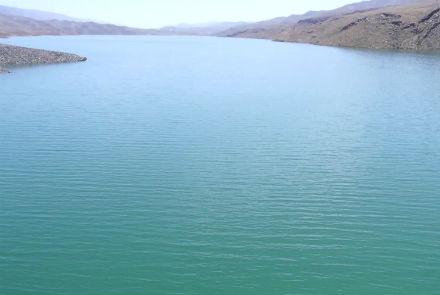Former minister of water and energy Ali Ahmad Osmani on Thursday said Afghanistan faces a severe water shortage in the northern water zone and in the Harirod river water zones.
Meanwhile Najib Aqa Fahim, state minister for natural disasters management has said that a lack of better water management of the country has led to a water shortage even in the neighboring areas of Helmand river.
Speaking at a seminar titled “Surface Water Management” Kabul on Thursday, Osmani compared last year’s assessment of Afghanistan’s water resources with Phalcon Water Standards and said that if a person gets 1700 cubic meters annually, it indicates a better situation for water resources in a country.
Status of water resources based on Phalcon Water Standards:
Over 1700 cubic meter – appropriate
1000 to 1700 – tensions
500 to 1000 cubic meters – conflict
Less than 500 cubic meters complete shortage
He said in the north water zone, which includes Balkh, Jawzjan, Faryab, Samangan and Sar-e-Pul provinces, the average access of water to people is 575 cubic meters annually, while in the Harirod river water zone, which includes Herat, Ghor, Farah and Badghis provinces, the average access of water to people is 693 cubic meters annually.
Water per capita in different zones:
Amu River – 4111 cubic meters
Helmand water zone – 2374 cubic meters
Kabul zone – 1437 cubic meters
Harirod and Murghab zones – 693 cubic meters
North zone – 575 cubic meters
“In the northern zone we are moving towards a crisis,” said Osmani.
Fahim said thousands of families have been affected by drought in the north.
“We had direct discussions with Mr Ali Shamkhani who serves as Iran’s national security advisor. He said that as much as the issues of Daesh and Taliban are important for you, equally, water is important to us,” said Fahim.
“Whenever a politician faces problems, the roots of social policy-making are also dried up, then he moves towards more infrastructural discussions and complicated issues, such as water, so that he can make something of himself,” said Ibrahim Jaffari, member of National Resources Monitoring Network.
Osmani also criticized the government’s advisor-oriented policies and urged the need for systematic change in the structure of the ministry of water and energy.
In addition, officials of the ministry of water and energy said the government is preparing to reassess the National Water Management Plan.
“National and international experts have worked on the plan. This strategy is more inclusive and comprehensive,” said Sultan Mahmoud Mahmoudi, head of the water management department of the ministry of water and energy.
Based on the statistics of the ministry of water and energy, Afghanistan’s water resources have declined to 49 billion cubic meters from 57 billion cubic meters due to climate change in the last 40 years, which shows a 14 percent decline.


